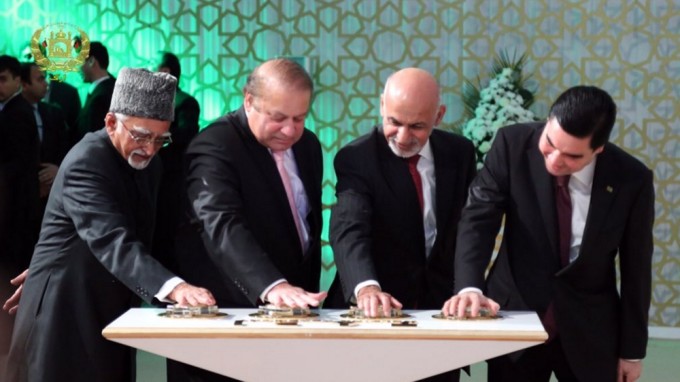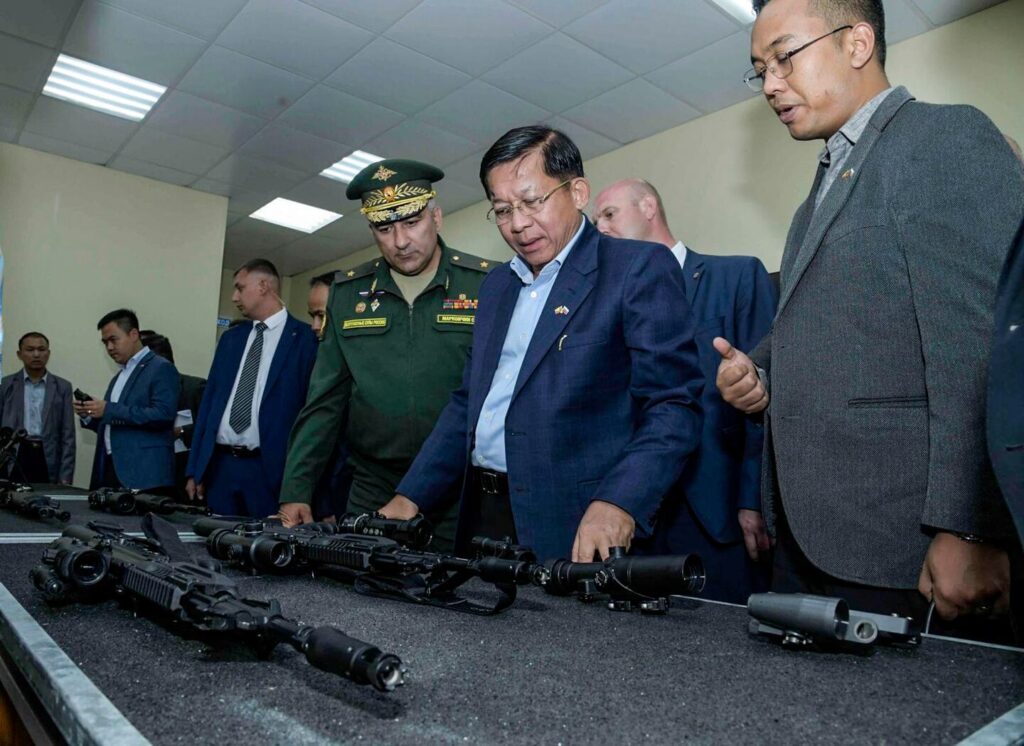MANTRAYA ANALYSIS#18: 18 OCTOBER 2017
SHANTHIE MARIET D’SOUZA
Abstract
The narrow security dominated approach has not yielded results in the last sixteen years of the ‘war on terrorism’ in Afghanistan. And yet there is much emphasis on kinetic operations and troop surge in the new strategy in Afghanistan and South Asia announced by Donald Trump on 21 August 2017. Expanding regional economic cooperation and establishing trade and transit linkages remains critical for the long term stabilization of the conflict ridden country. Regional economic cooperation and connectivity projects have the potential to bind the regional countries in a mutually beneficial framework of cooperation by establishing joint ventures, encouraging investment, and addressing the current trade and transit problems which has led to sub-optimal utilization of the available natural resources.Major regional connectivity projects such as Turkmenistan–Afghanistan–Pakistan–India (TAPI) Pipeline can help minimize the damaging impact of zero-sum competition and change the narrative of pessimism to opportunity in Afghanistan in terms of revenue, jobs, economic opportunities and self-sufficiency.

(TAPI Pipeline)
TAPI- ‘Cluster Approach’ to Development
The TAPI project initiated in the 1990s, has been subjected to inordinate delays due to competing geopolitical interests and agendas of external powers, in addition to the prevailing security situation in Afghanistan and Pakistan. The TAPI pipeline, which will transport Caspian Sea natural gas from Turkmenistan through Afghanistan into Pakistan and then to India and being developed by Asian Development Bank (ADB), received renewed interest in post-2001 Afghanistan. The 1,814-kilometre pipeline will run from Galkynysh gas field in Turkmenistan through Afghanistan and Pakistan to India. In Afghanistan, TAPI pipeline will be constructed alongside the Kandahar–Herat Highway in western Afghanistan, and then via Quetta and Multan in Pakistan. The final destination of the pipeline will be the Indian town of Fazilka, near the border between Pakistan and India.
The construction on the pipeline started in Turkmenistan on 13 December 2015 and is expected to be operational by 2020. On 24 April 2008, Pakistan, India and Afghanistan signed a framework agreement to buy natural gas from Turkmenistan. The intergovernmental agreement on the pipeline was signed on 11 December 2010 in Ashgabat. However, security consideration and differences in the fee structure delayed the initiation of project. On 16 May 2012, the Afghan Parliament, approved the agreement on a gas pipeline and the day after, the Indian Cabinet allowed state-run gas-firm GAIL to sign the Gas Sale and Purchase Agreement (GSPA) with Türkmengaz, Turkmenistan’s national oil company.Kabul has prepared an engineering design for its TAPI stretch and Islamabad is currently engaged in surveying work and “detailed engineering” is in progress.
Türkmengaz is the main shareholder of TAPI Pipeline Company Limited, the joint venture established to carry out the project. Other investors are Afghan Gas Enterprise, Pakistan’s Inter State Gas Systems Ltd and GAIL (India) Ltd.The Share Holders Agreement of TPCL was also signed on 13 December 2015. The shareholding percentage in the TPCL would be Turkmenistan 85 percent, and Pakistan, India and Afghanistan five percent each. Originally, the cost of the pipeline project was reportedly estimated at $7.6 billion, but a more recent estimate has increased the costs to $10 billion.
TAPI is thus construed to become an effective tool towards the formation of the modern architecture of global energy security, a powerful driver of economic and social stability in the region and more importantly, will act as a CBM to help initiate more projects that can contribute to economic stabilisation in Afghanistan and the region.

(Leaders from Afghanistan, Pakistan, India and Turkmenistan at the ground breaking ceremony of TAPI Project in December 2015, Photo: Al Jazeera.)
TAPI is seen as an illustration of cluster approach that will have a cascading benefits to other sectors. In his remarks at the Ground Breaking Ceremony of TAPI Project in Turkmenistan in December 2015, President Ghani had stated,
“TAPI is the beginning of a cluster approach to infrastructure. First, comes the gas pipeline but the discussions that we have had among four of us have resulted in agreement that TAPI will be accompanied by a fiber optic network as well. This will be the quickest way and the most reliable way from India to Pakistan to Afghanistan to Turkmenistan all the way to Europe and that is significant. In addition, later we will witness another historic first which is transmission of electricity from Turkmenistan through Afghanistan to Pakistan which will run parallel to TAPI. We in Afghanistan are committed to make the railways, highways and our canals and water management all brought together so what we see is not TAPI but a super highway of cooperation and coordination that will connect again South Asia and Central Asia together”.
Initially conceived as a pipeline, the concept is now being broadened to a cluster of a pipeline, transmission line, fiber optic network, a railway, roads, and airports, creating an integrated system of connectivity between Turkmenistan, Afghanistan, Pakistan and India.
Challenges and Opportunities:
The challenges of providing security and financing, notwithstanding, the pipe line has the potential of changing the negative security dynamics and geopolitical competition in the region to one of cooperation. It is seen as a ‘win-win’ deal for all the parties in conflict.
- Afghanistan
Amid the dominant media narratives of pessimism, dwindling international financial assistance and downward spiral of the Afghan economy, TAPI can be an important instrument to revive the Afghan economy and help move away from the status of aid dependent ‘rentier state’. It will create jobs and provide employment opportunities. According to sources in the Afghan Ministry of Mines and Petroleum, Afghanistan would receive annually a benefit worth $400 million. The Ministry also assesses that the project will create 15,000 jobs indirectly and would increase the speed of economic growth mobility of Afghanistan four times greater than now. TAPI will serve as a source of power and energy for industries, which could use its gas as their power supply. Establishing gas based medium capacity power plants and gas-consuming industries will be productive and useful investment. Such power plants and grids will provide solid investment opportunities for domestic and international manufacturers and provide small industries the chance to grow and create needed jobs.
Of the 1,814 kilometre long pipeline, 750 kilometres would be pass through Herat, Farah, Helmand and Kandahar provinces of Afghanistan which would help in construction of roads and infrastructure that are part of the project. This would also lead to construction of feeder roads and transport infrastructure. As the pipeline passes through volatile areas, the construction roads and new townships in many insecure areas will provide economic alternatives and thus reduce the support base for the insurgents. It will provide economic opportunities and revenue to contractors, construction workers, and local stakeholders which in turn could result in locals protecting this project against spoilers.It will also help reduce the strain of overpopulation on the existing urban areas by diversifying and making employment opportunities available in rural areas.
It will further provide an alternative energy source for Afghanistan, and reduce dependence on Iran for fuel, which has been subjected to periodic blockades. Iran fulfils 30 percent of Afghanistan’s oil and gas needs, a trade which is worth $4.5 billion. In decentralizing the present economic model, it will help revive the local indigenous base. The road connectivity, transport networks and townships would increase Afghanistan’s agriculture and export potential.It will help address the trade and transit issues mired in the difficulties as evidenced in the Afghanistan–Pakistan Transit Trade Agreement (APTTA) agreement of 2010 and create a momentum for greater trade between countries.More importantly, it will help build investor confidence in extracting and transporting Afghanistan’s huge mineral reserve estimated to be worth $1 trillion.
- Pakistan
Pakistan has been suffering from a dire energy crisis- an average shortage of 4,000 megawatts in the power sector and nearly two billion cubic feet per day (BCFD) in the natural gas sector, owing to a substantial disconnect between installed power capacity and actual generation and has a multiplier impact on different sectors of the economy and diverse segments of society.By 2050, the country’s electricity requirements will grow three-fold.If sufficient resources are not allocated and utilized effectively and efficiently, the energy crisis will further aggravate.It is estimated that TAPI volume would overcome almost 70 percent of the current gas shortfall and save almost $1 billion per year by replacing liquefied fuels for power generation. TAPI gas would be relatively cheaper. Pakistan will get $250 million from India as transit fee and Afghanistan will also get the same amount from Pakistan. It is predicted that Pakistan’s industrial growth would accelerate with sufficient energy being available to keep the wheels of industry moving.
TAPI will supply interpreted energies to fertilizers in the country and ultimately increase its agriculture productivity. Easy and smooth supplies of energy will also allow Large Scale Manufacturing (LMS) sector to manage their export orders easily and earn more foreign exchange for the country.It will generate substantial new jobs and employment opportunities and provide impetus for domestic banks and financial institutes that can form a consortium to invest this mega project.The early completion of the TAPI project would also send a strong signal to the foreign investors boosting their confidence and resulting in greater foreign investments.
- India
India’s interests in TAPI is linked to its bourgeoning energy requirements as well as its strategic concerns. New Delhi hosted a steering committee meeting of the proposed TAPI in August 2017.India’s move is also an effort to stave off any Chinese interest in the project, given that Turkmenistan is a close partner of China in its Belt and Road initiative across Central Asia, and Beijing is the largest buyer of its gas. Even the Galkynysh gas basin is being developed under a loan from the Chinese Development Bank (CDB).
In addition, TAPI will open up immense opportunities of investment for Indian private sector in areas related to infrastructure like railways, fibre optics, power generation, mining and skill development in Afghanistan.In April 2015, speaking in New Delhi President Ashraf Ghani has laid out a list of such opportunities. He said,”We see the Indian private sector as a key partner in transforming Afghanistan from an area shadowed by conflict to a hub where goods, ideas, people flow in all directions”.In the area of skill development, India can enter into major partnership with Afghanistan.
TAPI as a ‘Confidence Building Measure (CBM)’
The strategic significance of the project is tremendous. Once completed, TAPI can become a game changer in regional geopolitics and economic integration which have thus far been a non-starter. The agreement is between the states and the change of regime in any partner country will have no impact on the project.It would be one of main instruments for enhancing regional stability and improving living standards in South and Central Asia.
TAPI will provide cheap gas for Pakistan, India, transit fee for Afghanistan and Pakistan, and energy market to Turkmenistan, which will add to the economic dividend of all the countries. It will provide cheaper and cleaner energy to consumers which would bring economic prosperity and also reduce high ratios of inflation.It will generate incomes/revenues that can be used for developing the social sectors especially education, health, clean water and housing.It is estimated that the TAPI project will reduce poverty by expanding the use of natural gas resources and enhancing sub regional economic cooperation. It will lead to employment generation and thus may address the conditions by which young people join extremist groups.It would also lead countries to devise joint strategies to address security concerns that would impinge on their economic interests.
TAPI thus has the potential of being a CBM in South Asia. If equitable distribution of benefits are percolated to the common people it would build local stakeholdership. It could help improve security, governance and service delivery as the governments will need the support of the local populace, particularly in the volatile areas and the people would in turn, protect such projects of which they would be beneficiaries. It would have a ‘force multiplier’ effect in initiating other such projects and enhancing bilateral and regional connectivity in terms of tangible outcomes. Building trust between people and the governments, the pipeline would be able to compel countries in the region to move away from zero sum competition towards mutually beneficial frame work of cooperation. In a classic security-development (akin to chicken & egg) dilemma, the development rationale will help build constituencies of peace and deny the conditions for the extremist groups to thrive.
(Dr. Shanthie Mariet D’Souza, currently Visiting Research Associate at Murdoch University, Perth (Australia), is the founder and president of MISS and has carried out field studies in Afghanistan since 2007. All Mantraya publications are peer-reviewed.)




